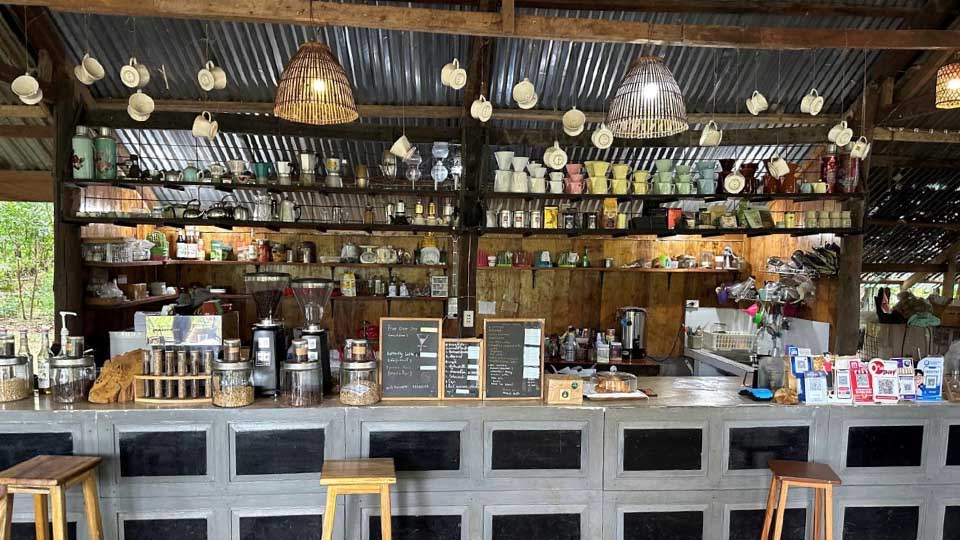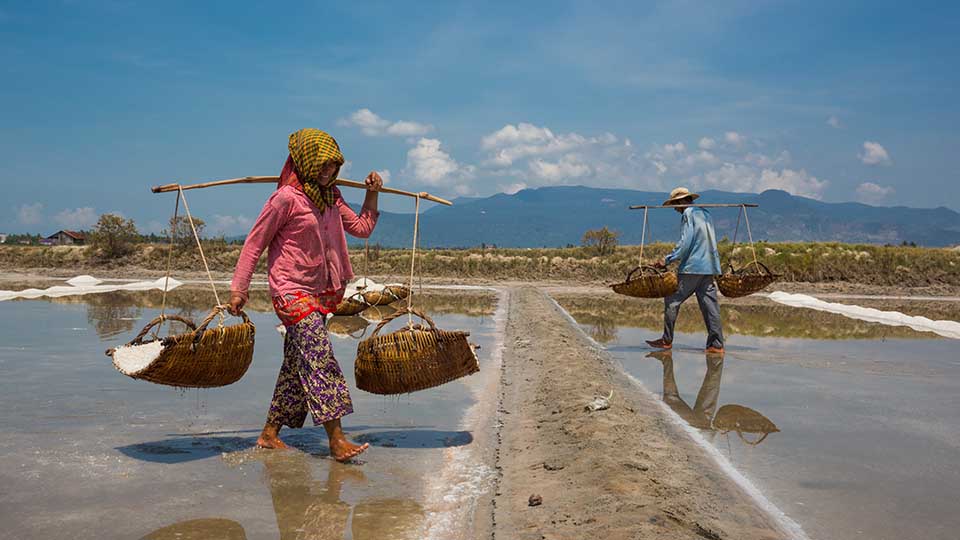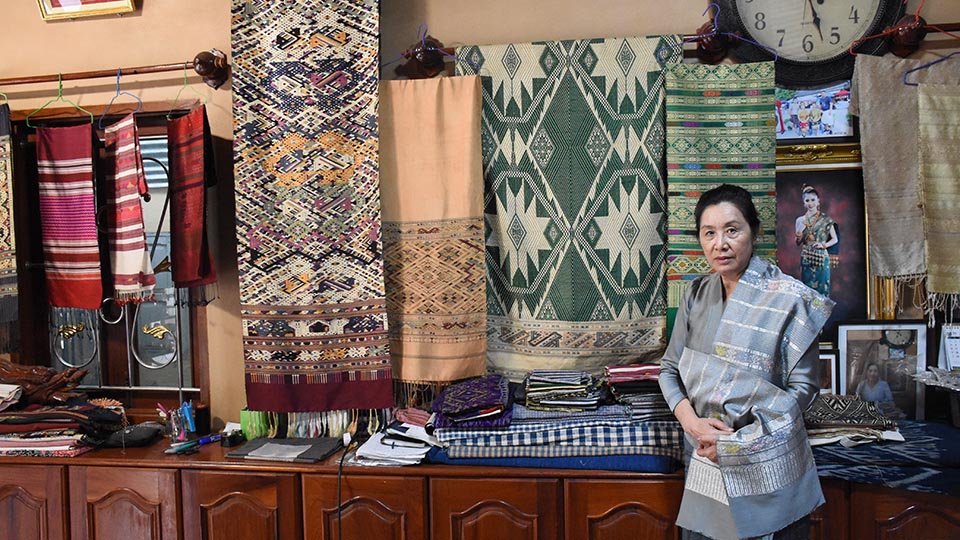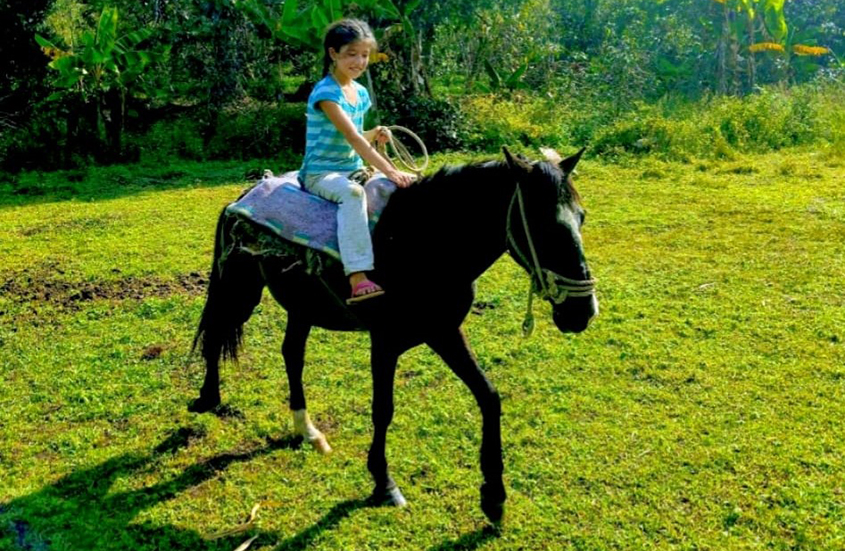Asociacion De Productores De Maiz Blanco Gigante Del Cusco, Peru
For generations, giant white maize has been cultivated around Cusco City (Cusco), in the Urubamba Valley of the Andes Mountains, the Republic of Peru (Peru). Since the 1950s, the city’s farmers have leveraged their illustrious maize-growing history in order to preserve their farming traditions, develop a marketable reputation for their grain and preserve the local environment.

In 2005, a milestone was reached when 17 of Cusco’s mainly small and medium sized farming communities joined hands and established the Asociacion De Productores De Maiz Blanco Gigante Del Cusco (APROMAIZ) – the association of giant white maize producers of Cusco. Since its foundation, APROMAIZ has united the voice and strengthened the bargaining power of its members.
Subsequently, the cooperative has collaborated with local and national government in Peru and with international agencies. As a result, the farming skill of the association’s members has been improved while the quality of the region’s maize has been enhanced. In addition, Cusco’s famous crop growing culture and environment has been conserved while the economic status of producers in the region has been developed.
Traditional knowledge
The cultivation of “giant white maize” (or paraqay sara in the local dialect) in the Urubamba Valley can be traced to a time before the Columbian era (or before 1492). References to the crop have been found in the cosmological calendar, religious myths and artifacts of pre-Columbian civilizations including the Inca Empire. Historical evidence of crop growing (including maize farming) continues to be present on the hillsides of the Urubamba Valley, which has deep terraces that were dug by farmers of the Inca period.
Indeed, maize cultivation know-how and culture in Cusco had been passed down the generations of farmers as traditional knowledge. Traditionally, the region’s farmers prepared the land (which was turned by ox-pulled plough or by a chakitaqlla, a hand plough) between June and July of each year. Following a short period of fallowing, the land was irrigated in August before planting commenced on or around August 30th (planting too soon or too late after this date was believed to have adverse effects on the crop including poor yields).
In order to grow maize in the traditional way, healthy seeds were mixed with guano (a manure made of droppings from bats or sea-birds), muña (an herb – minthostachys setosa – that is native to South America), and ash from a stove. This ancient yet effective process secured the seeds against microbes that may otherwise have destroyed them. Thereafter, the crop’s kernels were sown into ground.
Renowned for their gigantic size (the cob has eight rows, has been the largest in the world, and grows to between 12 and 20 centimeters in length while the entire plant stands at between 2 meters (m) and 3m tall), Cusco’s maize has a round flan shape and floury texture.
The massive grain, furthermore, is rich in nutrients including proteins, starch and sugars. Because of its nutritional qualities, the maize has customarily been used for a number of preparations such as for food (qulla lawa, a traditional maize soup) and drink (chicha, a cultural alcoholic beverage made by fermenting the crop with sugar or honey).
Historically, however, farmers in the region had planted, harvested and sold their crops in small, low yield farms that were relatively isolated from each other. In addition, such producers often farmed without direct or strategic access to the national or international markets.
By coming together under the auspices of APROMAIZ, maize growers in the region have sought to preserve their crop cultivating culture and improve methods for growing it while strategically developing the maize’s unique potential for economic development.
Goods with specific geographical origin
Cusco lies between 2,600m and 3,000m above sea level. The region borders Ucayali to the north, the Madre de Dios and Puno regions to the east, the Arequipa region on the south, and the Apurímac, Ayacucho and Junín regions on the west. Cusco, moreover, is surrounded by the Andes Mountain range and traversed by several rivers (which help to create a variety of micro climates or localized atmospheres in the area that range from frost to humidity). The area generally has a sub-tropical climate with two distinct seasons.

The rainy season, which runs from November (the hottest month) to March, is accompanied by average temperatures of approximately 12º Celsius (C). The dry season, which occupies April through October, is characterized by cold nights (especially in July) and sunny days and average temperatures of around 9 ºC. Because of its high altitude and climate, the region has had one of the highest levels of ultraviolet light in the world.
Furthermore, maize has been cultivated in the region at between 2,600m and 3,000m above sea level over a strip of fertile land (spanning approximately 70 kilometers) on either side of the Vilcanota and Willka Maru rivers. The weather and soil quality of Cusco have played an important role in maize cultivation in the region including: affecting the time of year for planting and harvesting; and, determining the measures taken to prepare the soil, fight crop disease and manage effective storage of seeds.
Because of the specific geo-climatic quality of this area, Cusco’s giant white maize has developed a flavor, texture and stature that is distinctive. This distinctiveness or terroir – the degree to which a product reflects its geographical and climatic origin – has been exploited by APROMAIZ in order to create a distinguishable reputation in the marketplace for Cusco’s giant white maize.
Appellations of origin
Appellations of Origin (AO) certification has been a useful intellectual property (IP) device allowing producers and governments to establish a marketable reputation for a product based on its place of origin and production practices or traditions. APROMAIZ has worked with the government of Peru and other organizations in order to establish an AO for the region’s giant white maize.
Because of these collaborations, in 2006 the region was granted an AO certification for “Maiz Blanco Gigante Cusco” by the Instituto Nacional de Defensa de la Competencia y de la Proteccion de la Propiedad Intellectual (IDECOPI) – Peru’s national IP office. In the following year, Cusco’s AO was registered under the Lisbon System for International Registrations of Appellation of Origins managed by the World Intellectual Property Organization (WIPO).
The AO defines and authorizes specific areas or regions of maize production in Peru that can legally use the “Maiz Blanco Gigante Cusco” certification. These regions include: the Province of Calca (Districts of San Salvador, Písac, Taray, Coya, Lamay and Calca); the Province of Urubamba (Districts of Urubamba, Huayllabamba, Ollantaytambo, Yucay and Maras); and, Cusco.
Moreover, only maize farmers in the specified areas – who satisfy the strict criteria of the crop’s production as established in the APROMAIZ Code of Practice (CoP) for producers – have been able to use the “Maiz Blanco Gigante Cusco” label as a means of marketing their maize products.
Research and development and partnership
In order to achieve an AO for Cusco, APROMAIZ has partnered with the Peruvian government and others including specialists from academia and the private and non-governmental sector. Through such partnerships, the cooperative managed to improve producers’ farming skill and production capacity while opening new avenues for commercializing the region’s maize.

In 2001, farmers in the region – including members of APROMAIZ – collaborated with several agencies of the Peruvian government such as INDECOPI and the Puno-Cusco Corridor Project (PCCP) – an agency of the Peruvian government that managed funds (between 2001 and 2008) for rural development initiatives in the region.
One of the main goals of the PCCP was to introduce women rural workers – including maize farmers in the southern Cusco region – to the banking system (by providing them with savings accounts and micro-loans for, among other purposes, investing in their small farming businesses).
APROMAIZ and Cusco city have relied on the support of other partners such as the Swiss Agency for Development and Cooperation (SDC) – the international economic development agency of the Swiss Confederation. SDC, for example, provided both logistical and financial support for farmer-orientated projects under the auspices of Cusco city and APROMAIZ.
Via an SDC initiative – called the PyMAGROS project – APROMAIZ’s members and other rural workers in Cusco were able to create development strategies based on detailed market research provided by the Swiss agency. Important IP and other legal support were provided by specialists such as Clark, Modet & Co. – an international law firm based in the Kingdom of Spain (Spain).
Because the region’s AO certification was one of the first to be undertaken in Peru, the partners were faced with a number of challenges early on. For instance, key players for the R&D process – including crop experts (such as an agronomist or plant use specialist), consultants (including a cultural historian and geographers), and local farmers – had to be identified.
Among farmers, three distinct groups were described: large scale producers (who rely heavily on modern technology such as tractors for farming practices and can achieve 6,500 kilograms per hectare (kg/h) in crop yields); medium-sized farmers (who use some modern technology but do not use fertilizers, for instance, and attained yields of 4,000kg/h), and, small-scale growers (who use simple, traditional technology such as ox-drawn ploughs and work in fields producing approximately 1,500kg/h yields).
The third group, as highlighted by the R&D process, represented most of Cusco’s producers. Small-scale farmers had been particularly vulnerable to paying low prices for their products (due to the need to use intermediaries to gain access to the market); they also often achieved poor yields.
Moreover, the research initiative (which included several initial interviews with hundreds of other stakeholders over a seven month period), was a logistical challenge due to the distances covered in the vast Cusco region. Budgets, furthermore, had to be allocated for each of the participants (including potentially expensive consultancy fees).
When the time-consuming R&D process was nearing completion in 2003/2004, and formal human resources were allocated and financial agreements were reached with each of the partners, four years had elapsed.

The R&D process, however, proved to be worthwhile exercise. Because of it, a number of important milestones were crossed including the publication of reports that established giant white maize’s cultural heritage and defined its specific biological qualities.
The initiative, moreover, described the region’s geo-climatic references which were published via technical maps and diagrams detailing measurements of altitude, hours of daylight, temperature, and soil, water and maize quality.
Furthermore, the research confirmed giant white maize’s importance as a crop that could provide added value and unite previously atomized farming communities in the area. In addition, policy makers in the Urubamba Valley were able to identify and implement new ways to improve producers’ technical skill (through farming seminars and advice on best farming practices) and develop their financial capacity.
The R&D process highlighted clear choices (via market research carried out in Cusco) for generating sustained economic activity for the region’s producers. Compared to coffee and potato farming (which require 50 to 60 days per hectare/year for cultivation), for example, maize had greater potential among the region’s main cash crops for providing a more sustained form of rural employment (maize cultivation, by contrast, requires an average of 180 days of work per hectare).
The information gained from the Cusco R&D process (including the partnerships with APROMAIZ and others) was critical in laying the foundation for the city’s successful bid for an AO certification for giant white maize.
By 2007, Cusco city had established a Regulatory Board (the Board) which included representatives of APROMAIZ (and other farmers’ associations), state officials (from the Regional Ministry of Agriculture), members of the public and industry experts (who provided advice on matters such as crop disease and pest control).
The Board’s priorities have included developing a CoP for maize farmers (that has technical specifications regarding planting, harvesting and storage of the crop) and implementing measures for improving maize yields (such as establishing classification systems for defining its quality).
Moreover, the Board has earmarked funds that have been invested in cultivation equipment and utilized for marketing strategies (including exploiting income streams based on value-added products such as maize-based snacks for local and export markets). In addition, different categories of producers (such as women) and their needs have been identified by the Board in order to build their farming capacity accordingly.
As the Board’s capacity to implement change developed, the city elected a Board of Directors in 2009 that has subsequently overseen the management of Cusco’s AO certification for maize. The result has been a steady growth in the capability and size of Cusco’s maize farming community. As of 2012, APROMAIZ’s members were collectively involved in cultivating the region’s giant crop and developing its cultural and economic value.
Branding and commercialization
In order to win new customers and to compete in the national and international market, APROMAIZ has produced quality maize supported by attractive brands and enhanced by the region’s AO certification. In support of these branding initiatives, the cooperative has developed a comprehensive commercialization strategy.
The farmers’ association has implemented modernized processing plants that have ensured its maize is quickly disinfected, classified, calibrated and packaged under quality controlled and sanitary conditions. The association, moreover, has improved maize quality by implementing a clear CoP for its members. Among other things, the CoP has established strict standards for maize cultivation and production (which include specific standards for the size, texture and quality of grains).
APROMAIZ, furthermore, has ensured that all its products are organically produced and have not undergone genetic modification. Having established a sanitary, natural and well organized regime of maize production, the farmers’ association developed a robust commercialization strategy.

To this end, the cooperative developed two separate but overlapping streams for generating income: (a) maize produced for human and non-human consumption that is sold to the national and international market; and (b) maize for re-planting and for industrial use.
In order to commercialize the crop for human consumption within Peru, APROMAIZ has marketed the product as an accompaniment to the nation’s gastronomic tastes. Indeed, maize consumption in Peru has been widespread and can be experienced in many of the country’s traditional dishes. The cooperative’s famous crop has also been sold within community markets and to private retailers and suppliers in Cusco.
In addition, APROMAIZ has relied on the giant white maize’s illustrious lineage in order to commercialize the seeds to domestic client farmers (especially to the maize growers in the Mantaro Valley, to the east of Lima, the capital and largest city in Peru) who have planted it as a cash crop.
Customers, further still, have been reassured of and attracted to the product’s pedigree because of the “Maiz Blanco Gigante Cusco” label which appears on the region’s maize products.
Commensurate with its domestic commercialization strategy, the farmers’ association partnered with retailers who have created maize-based brands of value added products for both the national and international market.
APROMAIZ’s maize has been packaged and commercialized in a variety of snacks and flavors that have been sold within various retail outlets. Moreover, the cooperative’s grain product has been sold via a number of national and international brokers including Peru Inka S.R.L. (Peru Inka), an agro-industrial company based in La Florida Los Kantus, Cusco.
One of Peru Inka’s most well-known brands – “Inka Peru Kuksi” – has been a salty, fried snack made of maize supplied by APROMAIZ. Other well established domestic snack brands that contain the cooperative’s maize are Prodalec, Kuski, and Inca Korn. Furthermore, giant white maize from the region has been commercialized internationally via clients such as Salysol™, a manufacturer of snacks based in Sevilla, Spain.
In addition to its line of products for human consumption, APROMAIZ has developed new commercial streams for its crop to be used as animal feed and processed as an industrial ingredient (such as glucose, gluten and starch).
Typically, maize that is intended for industrial use in international markets is packaged in two ways: in polypropylene bags of 70kg; or, in jute bags of 50kg. These packages are further separated into two kinds: first quality and second quality maize (determined by the size and texture of kernels).
The farmers’ association, however, has flexibly adjusted its packaging to suit the specific requirements of each of the countries where it exports its products. As of 2012, APROMAIZ’s giant white maize was sold to customers throughout Peru and around the world including in the French Republic, Japan, Spain and the United States of America (USA).
Environment and food security
Peru has had a rich bio-diversity and cultural legacy that has been acknowledged both nationally and internationally. The country, for instance, was one of the historical global centers for approximately 160 cultivars – or groups of plants such as maize, coffee and potatoes that have been domesticated and cultivated for human consumption.

The country, moreover, has over 11 locations (such as the Machu Picchu historical estate in Cusco) that have been awarded World Heritage Site status by the United Nations Educational, Scientific and Cultural Organization – a specialized agency of the United Nations.
Endowed with a plentiful flora & fauna and diverse culture, the Cusco region, however, has had to endure the constant risk of environmental decline and food insecurity. These risks have included: (a) river pollution; (b) crop pests; (c) giant white maize degeneration (due to genetic modification and cross-breeding with yellow maize); (d) adverse weather conditions (including floods); and, (e) soil degradation (caused by over use of fertilizers).
Such natural and artificially caused risks have sometimes led to concerns not just over the environment but also regarding food security.
In order to minimize and manage these risks, APROMAIZ has worked with local and national government and utilized the benefits accrued from the region’s AO certification for giant white maize. Indeed, the certification has not only enhanced the reputation and economic potential of Cusco’s famous maize; it has helped to raise environmental and food security standards in the region.
Because of the strict standards in the cooperative’s CoP (which was established as a prerequisite of the Cusco AO), farmers in the region have maintained seed diversity by ensuring the pedigree of giant white maize is free of artificial modification and cross-breading. Ensuring genetic crop diversity has been important in order to fight off pests while sustaining the variety of fauna in the region.
Moreover, these standards have been in accord with legislation of the Regional Government of Cusco and the principles outlined in the Convention for Biodiversity (CBD) – an international treaty which includes elements of biodiversity and issues arising from genetic manipulation of crops.
In addition, because the Cusco AO has helped to unite many of the region’s maize farmers through cooperatives, APROMAIZ and the city have been able to spread and collectively mitigate the environmental, ecological and economic risks (such as indebtedness following poor yields) that each farmer would have previously faced alone.
The cooperative, furthermore, has ensured a reduction in the use of artificial fertilizers in maize farming practices by implementing organic maize cultivation instead. Such measures have resulted in fewer pollutants in the soil and rivers of the area.
The Cusco AO has also raised awareness of the cultural importance of maize growing in the region. This has led to local measures being taken to maintain and perpetuate such traditions, including implementation of traditional maize growing rituals of the Inca and bolstering the area’s tourism industry and rural economy. Because of Cusco’s outstanding natural beauty, the Urubamba Valley has become an ideal location for nature lovers and outdoor sports enthusiasts including rafters, mountain bikers, hang-gliders and trekkers.
The overall effect of Cusco’s AO, therefore, has been to enhance the region’s environment, reduce the risk of food insecurity, augment local pride and spread the benefits of a well-managed economy.
Business results
APROMAIZ and Cusco City have spurred a remarkable transformation in giant white maize cultivation and the rural economy of the Urubamba Valley. Just two years after the region’s successful bid for an AO certification, there were six new brands of maize products within local retail shops, bars and restaurants.

The farmers’ organization and the city, moreover, have relied on a growing network of local and national suppliers and retailers in order to enter both regional and international markets. In 2010, giant white maize from Cusco was exported in growing numbers to Spain (which accounts for 69% of its market or US$ 5.3 million), Japan (20.7%, or US$ 1.6 million), the USA (6.4%, or US$ 507,800), and the People’s Republic of China (2.2%, or US$ 174,800).
Between January and September of the same year, the region enjoyed an increase of 29% – compared to the same period in 2009 – in exported maize. The increase represented US$7.9 million – which was a new record for Cusco.
The region, in addition, has developed new export markets around the world including the Republic of Bulgaria, the United Mexican States and the Republic of El Salvador. Cusco’s economy – in part driven by the impressive producers of APROMAIZ – has continued to grow and to ensure that Urubamba Valley remains the number one tourist destination &ndash with two million visitors annually – in Peru.
Growing on the shoulders of giants
Inspired by their Incan ancestors, giant white maize farmers in the Urubamba Valley of Peru banded together to form a cooperative. By relying on each other and by collaborating with government and international partners, the producers developed their economic and farming capacity with support of the IP system.
In the process, maize farmers in the Cusco region were able to protect the environment and reduce the risks of food insecurity while sustaining their illustrious farming traditions.



